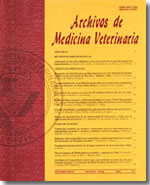Transgenic animals: past, present and future
Main Article Content
Abstract
Since the initial demonstration in 1980 that a transgenic animal could be generated harbouring a transgene from a different species, genetic engineering has revolutionized all aspects of fundamental biological and biomedical research. Since then, much has been accomplished in the generation of various types of transgenic animals, including cows, pigs, sheeps, goats and rabbits. Until recently, genetically modified livestock could only be generated by pronuclear injection. The discovery that animals can be cloned by nuclear transfer from cultured somatic cells means that it is now possible to achieve gene targeting in these species. This may have important implications for the purposes of drug discovery research, to improve animal health and productivity, in cloning pigs as a source donor for xenotransplantion, and in the production of pharmaceutical proteins. This review discusses the development of transgenic technology and the potential benefits emerging from nuclear transfer as a novel route for the generation of transgenic livestock.

